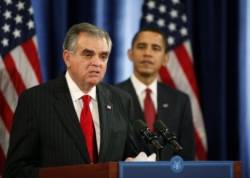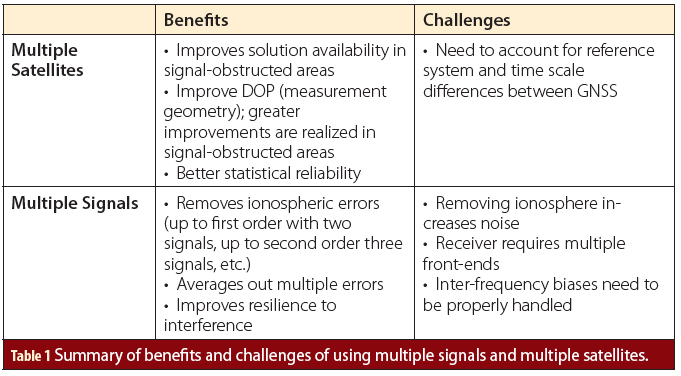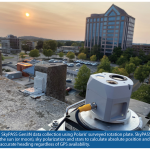 Transportation Secretary Ray LaHood
Transportation Secretary Ray LaHoodOne change that apparently won’t happen under the Obama administration is replacing the federal gasoline tax with a GPS-monitored mileage fee.
In an interview with the Associated Press last week, U.S. Department of Transportation (DoT) Secretary Ray LaHood had suggested that his agency should look at a “vehicular miles program where people are actually clocked on the number of miles that they traveled.”
It was one of the shortest flights of a trial balloon so far this year.
One change that apparently won’t happen under the Obama administration is replacing the federal gasoline tax with a GPS-monitored mileage fee.
In an interview with the Associated Press last week, U.S. Department of Transportation (DoT) Secretary Ray LaHood had suggested that his agency should look at a “vehicular miles program where people are actually clocked on the number of miles that they traveled.”
It was one of the shortest flights of a trial balloon so far this year.
When asked at his February 20 news briefing about the mileage fee concept and whether President Obama had “weighed in” on the subject, White House press secretary Robert Gibbs said, “I don’t believe the President has. I can weigh in on it and say that it is not and will not be the policy of the Obama administration.”
A number of states and regions have explored the idea of replacing or supplementing the local gas taxes with systems — frequently employing GPS-based methods — that log and assess fees based on actual mileage driven. The motives for implementing such plans typically include reducing congestion on heavily traveled roads and highways or increasing tax receipts that have been fallen as Americans drive less due to high gasoline prices or use fuel-efficient cars, including electric vehicles or gas/electric hybrids.
Last year, an eight-month pilot project studying the potential for reducing highway congestion in Washington state’s Puget Sound area using GPS-based variable tolling concluded that the benefits could exceed $28 billion over a 30-year period. And last month Oregon Governor Ted Kulongoski asked the legislature to allocate $10 million to convert the state gas tax program to a mileage-based system.
Both projects will be featured at the nation’s first transportation symposium on mileage-based user fees scheduled April 14–15 in Austin, Texas. Sponsored by the Texas Transportation Institute and the University of Minnesota, the conference agenda addresses the current status of state pilot projects and mileage fee development efforts in the United States. Agenda and symposium registration information are available on-line at http://tti.tamu.edu/conferences/mbuf09/program.htm
The Traffic Choices project, conducted by the Puget Sound Regional Council (PRSC), created a virtual network of toll roads based on actual highways in the Seattle area. Vehicles from 275 households were outfitted with an on-board unit (OBU) or meter containing a GPS receiver and a display showing the toll rates for various routes. (The OBU was essentially the same as that used by Germany’s TollCollect system of assessing fees on commercial trucks.)
The OBU matched the vehicle’s position to a map of the toll-road network embedded in the meter. The meter’s display showed toll rates and a road description. The meter stored the GPS-derived coordi¬nates — at a one-second position update rate — and toll information, periodically communicating these to a cen¬tral computer using cellular wireless communications.
The rates varied depending on the time of travel and the routes chosen. The toll rate structure charged higher rates for travel during peak travel times on high demand roads.
Each household received a “travel budget” that was spent on mileage fees — with the funds remaining in the household allocation at the end of the pilot project being turned over to study participants. This provided an incentive for the participants to drive less, along less-congested routes, and at less busy times of the day. As study participants drove their vehicles on tolled roads the appropriate charges were deducted from their account balance.
The $2.35 million study was financed with grants from the U.S. Department of Transportation, Federal Transit Administration, Federal Highway Administration, and Washington State Department of Transportation. More information about the project, including various reports, can be found at the PRSC website.
In Oregon, the mileage-fee idea was tested in a 2006 pilot program deemed a “proof-of-concept” success by the Oregon Department of Transportation (ODoT).
Using a $2.1-million grant from the Federal Highway Administration, the state outfitted two service stations in the Portland area with mileage-reading technology. About 260 volunteers agree to have devices incorporating GPS receivers installed in their vehicles that logged the miles traveled (but not the actual locations). The pilot program and final report can be found on the ODoT website.





